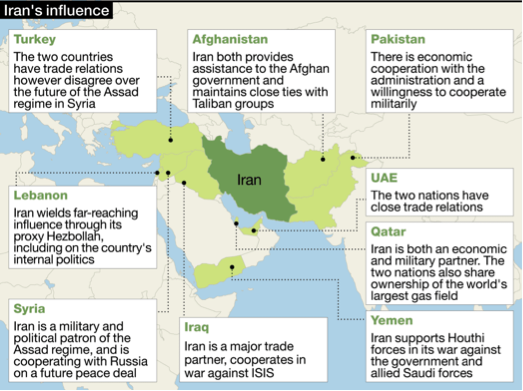Montbrison I don’t normally provide opportunities for other writers to post material at my blog for a number of reasons. There is the quality control issue–the guest writer must have a talent for writing as well as something to say worth reading. Not to mention (except I am) it takes a bit of effort on my part to screen, edit, format, and publish the work of someone else and I’m a bit lazy by nature. Monforte de Lemos Also, I would be spending time that could be devoted to my own writing or editing, versus to the work of a total stranger, so I don’t normally invite or encourage guest bloggers to submit articles for review. On the other hand, when I make an exception and post a guest blog such as this one, I’m giving that writer’s effort my endorsement by publishing their work and strongly recommending you read it.

About the Author: Avi Kumar grew up in Sri Lanka. As a member of the Tamil minority, he has a unique perspective when it comes to growing up in a war zone. From an early age in order to survive, he learned to remain silent about controversial issues when it wasn’t safe to speak about them. Avi has lived in five different countries and speaks ten different languages. Fortunately, one of his ten languages is English, or I wouldn’t have had the slightest idea what I was reading. Avi loves wildlife photography and writing about religious and political issues with his unique conservative perspective.
Iran’s global influence and threat level keep growing, While Iran may not be an economic powerhouse like Saudi Arabia, Israel or the U.S.–it has military support from Russia. And like Russia, Iran has a government that is less prone to change than most democracies. Therefore, Iran has a consistent policy when it comes to waging overseas wars and funding terrorist activity, making the Ayatollahs a perennial threat to Israel and the West. Being the largest Muslim country that is Shia majority (only fifteen percent of the global Muslim population), Iran has been able to exert influence by tapping into Shia fears of being persecuted by Sunnis.
Houthis in Iran, Hezbollah In Lebanon, Assad’s Syria and pockets of sympathizers elsewhere make up Iran’s sphere of influence. The West and the Sunni nations command more landmass and have greater economic and political influence. Iran’s Gross Domestic Product cannot compete with the rest of the world, yet it is able to engage in limited global warfare.
Theologically, Syrian Alawites & Yemeni Ziadi Shias are a lot more different from the Iranian twelver sect than most Sunni sects are from each other, but the threat from the larger Sunni population has united them. Iran’s soft power has put Bahrain’s government in a state of fear. The ruling Sunni elite have kept the Shia majority suppressed with an iron fist, but in the aftermath of the “Arab spring” and given the current political climate, the Ayatollahs have been forced to hire foreign mercenaries (mostly from Pakistan) of Sunni faith to keep the peace.
The Iranian government even handed out several concessions to the local population to prevent an uprising. Saudi Arabia and Egypt also fear reprisals from their Shia minorities and have clamped down on them hard, further fueling Iran’s influence among Shias worldwide. Another factor fueling Iran’s soft power is their persistent anti-Israel diatribe. Many in the Arab/Muslim world share their strong anti-Israel attitude – much of it coming from propaganda funded by the Saudis. Ironically, Iran was the first Muslim country to recognize Israel’s independence in 1948.
It wasn’t until the Islamic revolution in 1979 that Iran officially changed their stance. Now, however, as relations between Saudi Arabia and Israel are warming up, the new political stance could create new tensions among many Sunnis who have a strong sympathy for Palestine, possibly shifting the fragile balance of power.
Although most realize that Palestinians are Arab and Iranians treat their own Arab minority badly, their influence among Shia Arabs elsewhere and even Sunni Arabs who are anti-Israel is astonishing[1]. In fact, Iran doesn’t treat minorities within its borders well. Although Jews and Zoroastrians have seats in parliament, they are subject to state persecution. Followers of the Baha’i religion face persecution on a daily basis[2].
Saudi Arabia has been the de facto leader of the Sunnis given its economic and military resources. The Saudi military is large, but the failures of the Arab armies in the wars with Israel and their inability to repel Saddam in 1991 suggest that Arab armies might not be prepared for war. They may have wealth and the latest weaponry[3], but their armies don’t have actual combat experience.
By comparison, Iran’s military is well organized & more battle tested. Saudi Arabia and Iran both have geography on their side. They are the only Middle Eastern countries that were never colonized. Iran’s mountainous terrain and the Saudi desert means that a proxy war (versus open war) could span many years, like the Iran-Iraq war. Saudi Arabia’s soft power includes control of pilgrimage sites, Mecca & Medina. Although the Saudis have restricted Qatar nationalities from entering hajj, they haven’t extended the ban to include Iranians, although tensions are high.
Many Sunnis sympathetic to Iran’s anti-Israel and pro-Palestine stance also lean towards them including Hamas and the regime in Qatar, even Malaysia’s current leader Mahathir Mohammed (an open Anti-Semite) has spoken in favor of them[4][5]. Qatar was recently isolated after the crisis/blockade imposed by Saudi and others in the region but came out unscathed due to aid from Iran.
Oman belonging to the Ibadi sect swayed towards the Shia side – this map shows how an alliance with Iran could benefit them.

Iran’s hard power has been enhanced by carefully chosen battles. Assad won the Syrian war after crossing Obama’s imaginary red line – probably the most dramatic victory for the Iranian sphere. The Shia dominated army beat the Sunni majority. Hezbollah, an Iranian proxy, rules Lebanon. The rise of Iraqi Shia militias in the post-Saddam Iraq also demonstrates this. U.S. Troops have to bribe the militias to get weapons and aid to the northern Kurdish regions. Members of the Iraqi Army even carry pictures of pro-Iranian Clerics in their wallets[6].
Yemen’s takeover by Houthis who are now giving Saudi trouble on its eastern and southern regions, Bahrain’s constant state of fear and Hamas’ brazen attacks on Israel are signs that the Iranian axis might not be able to beat NATO, but they can definitely give them a run for their money.
Despite their overall lack of financing, Iran has willpower, raw strength and a willingness to spend what they do have. They will continue to be a threat to peace and stability, particularly in the Middle East, if the Ayatollahs continue to wield their power and influence in the Muslim world.
[1]https://www.haaretz.com/middle-east-news/for-many-sunni-muslim-countries-iran-is-not-a-threat-1.5465316
[2]https://www.rferl.org/a/iran-lifts-ban-on-zoroastrian-city-council-member/29381709.html
[3]https://www.theguardian.com/world/2018/mar/12/nearly-half-of-us-arms-exports-go-to-the-middle-east
[4][4]https://www.timesofisrael.com/malaysian-leader-says-anti-semitism-invented-to-prevent-criticism-of-jews/
[5]https://www.tasnimnews.com/en/news/2018/09/26/1838306/iran-s-rouhani-malaysia-s-mahathir-underscore-closer-tehran-kuala-lumpur-ties
[6]https://www.albawaba.com/news/‘iranians-have-provided-bulk-forces-allowed-bashar-al-assad-re-secure-syria’-phillip-smyth-wash

Speak Your Mind